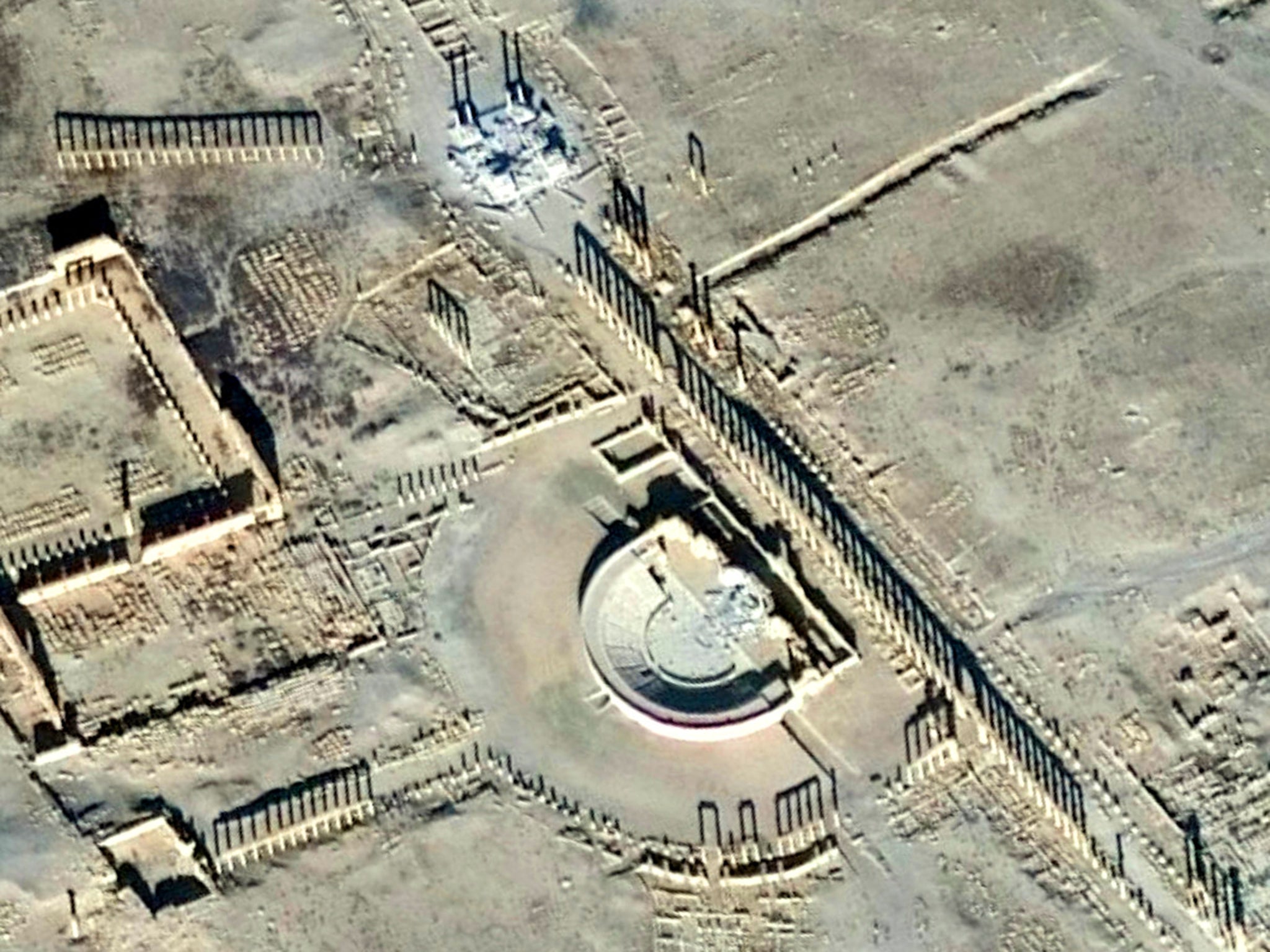Isis destroys more of Palmyra including Roman amphitheatre, say Syrian authorities
Jihadis recaptured ancient city after a surprise offensive on Syrian-government allied Russian and foreign Shia troops in December

Isis has inflicted more damage on the ancient Roman city of Palmyra in Syria, the Damascus government has said.
Satellite imagery analysed by an NGO dedicated to preserving Syria and Iraq’s cultural heritage shows that the famous cubic-shaped Tetrapylon and part of the facade of the site’s amphitheatre have been destroyed, probably with dynamite, during an attack on Wednesday.
New stone debris can been seen scattered across the amphitheatre’s stage, as well as damage to the facade’s backdrop, the Boston-based American Schools of Oriental Research (ASOR) said on Thursday. Two of the Tetrapylon’s four columns and the majority of the structure’s centre have been severely damaged, ASOR added.
The Syrian government’s antiquities chief Maamoun Abdulkarim confirmed that the world-famous ruins had suffered further damage on Friday.
The destruction was accompanied by a wave of executions at the site and a nearby empty Russian army base, monitors said.
Twelve local civilians, among them teachers and civil servants, were reportedly either beheaded or shot in Palmyra’s amphitheatre in front of a crowd of men and children during Wednesday’s violence.
About 75 Palmyrene citizens remain under arrest by Isis, the Palmyra Monitor group says, as well as dozens of Syrian soldiers and militia fighters. Their families are afraid for their safety.
The grand setting of Palmyra’s amphitheatre was a favourite backdrop for gory propaganda videos and executions when Isis controlled the site between May 2015 and March 2016.
The jihadis were driven out of the city by the Syrian army with the help of heavy Russian bombing, but in December 2016, nine months later, managed to recapture the area in a surprise assault on Syrian government-allied Russian and foreign Shia troops after forces were moved out to focus on retaking the rebel-held city of Aleppo.
During Isis’s first ten-month-long occupation, the ancient site was ransacked, parts of it destroyed with sledgehammers, bulldozers and dynamite, and the local population forced to live under Isis’s harsh interpretation of Sharia law.
Dozens were executed among the ruins, including Palmyra’s former head of antiquities, 81-year-old Khaled al-Assad, after he was found to have smuggled artefacts out of the city to protect them.
The unexpected recapture of the UNESCO-listed heritage site was a boon for the group, which seeks to make its mark by destroying the Roman monuments it views as idolatrous.
However, Isis lost more than a quarter of its territory across Syria and Iraq in 2016, a new report from conflict monitor IHS Markit says, and is largely on the defensive as it struggles to hold onto the key towns of Raqqa and al-Bab in Syria, and Mosul in neighbouring Iraq.
Join our commenting forum
Join thought-provoking conversations, follow other Independent readers and see their replies
Comments